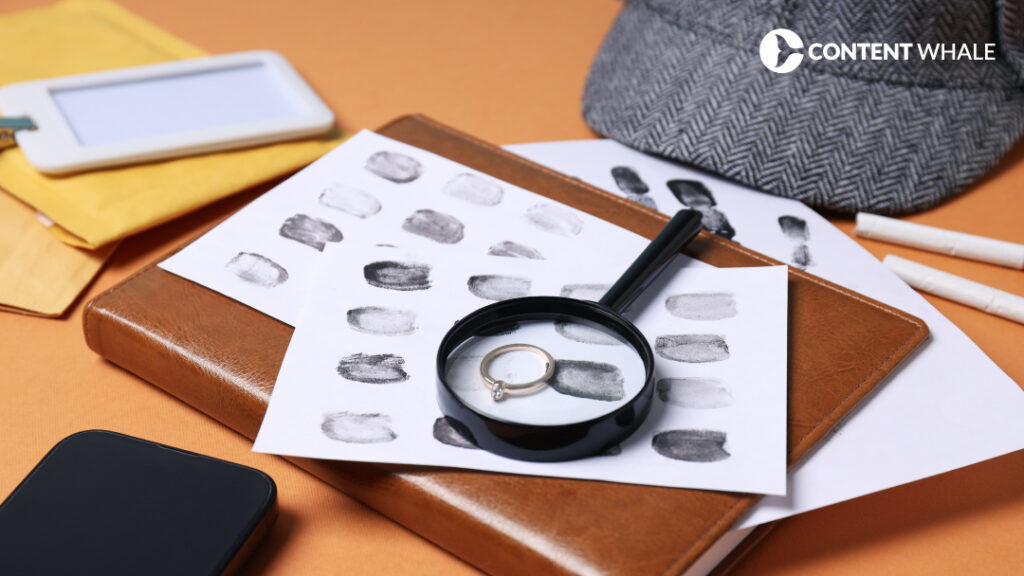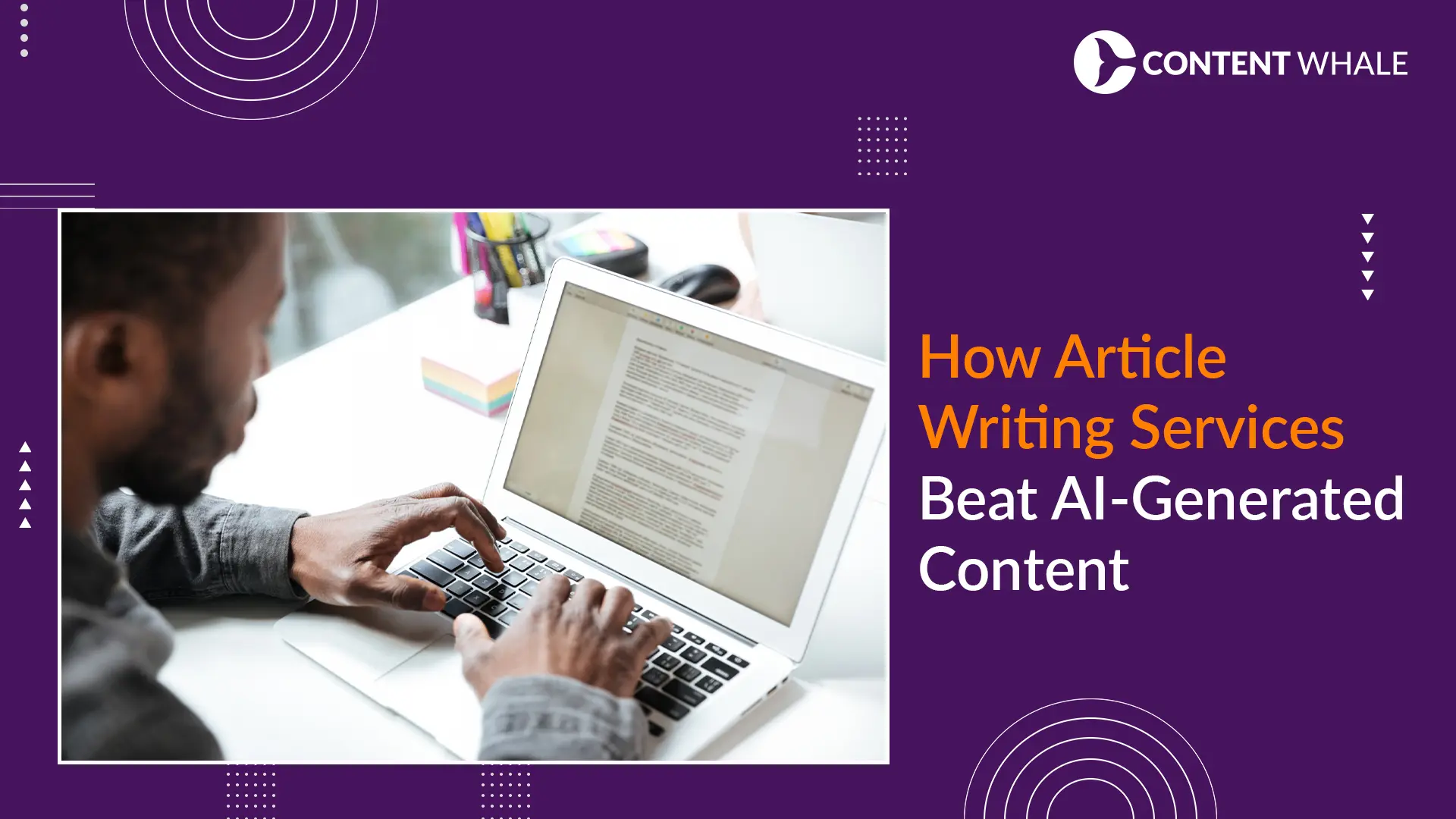How to Avoid Plagiarizing Content? Creating original content is more important than ever for maintaining your website’s reputation and ensuring it stands out in a crowded online space. However, plagiarism prevention is a challenge many content creators face, sometimes unintentionally. Plagiarism can happen when you rely too heavily on sources, fail to properly cite references, or even unknowingly repeat ideas that are common in your industry.
The consequences of website content plagiarism go beyond mere penalties from search engines; they can damage your brand’s credibility and lead to copyright infringement issues. These risks highlight the importance of understanding how to avoid plagiarizing content effectively. In this blog, we’ll explore strategies that ensure content originality and help you avoid duplicate content, ultimately protecting your website and its SEO standing. Whether you’re an individual blogger or a business, maintaining ethical content practices is key to long-term success.
This guide aims to provide actionable tips to help you safeguard your content, use plagiarism checker tools effectively, and comply with SEO and plagiarism guidelines. Let’s explore these strategies to ensure your content remains unique and valuable to your audience.
1. Understanding Plagiarism and Its Consequences
a) What is Plagiarism in Website Content?
Plagiarism in website content happens when you use someone else’s work—whether it’s text, ideas, or expressions—without giving them proper credit. This could involve directly copying text or subtly rephrasing someone else’s ideas. Website content plagiarism is harmful, whether intentional or accidental, and can seriously damage your site’s reputation.
b) How Plagiarism Affects SEO and Rankings
- Search Engine Penalties: Search engines like Google prioritize original content. If they detect plagiarized material, your website could suffer from lower rankings or even be removed from search results. This negatively impacts your SEO and plagiarism efforts and could lead to a significant loss of organic traffic.
- User Trust: Plagiarism erodes trust. When users find duplicate or unoriginal content, they are less likely to view your site as a credible source, leading to decreased engagement and higher bounce rates.
c) Legal and Ethical Implications
- Copyright Infringement: Using someone else’s work without permission can lead to legal troubles, including lawsuits and fines. Copyright infringement is a serious issue that can have long-term financial and reputational consequences.
- Ethical Concerns: Beyond legal issues, plagiarism is also an ethical violation. Ethical content writing involves respecting others’ intellectual property while contributing your own unique perspectives.
d) Real-World Consequences
- Case Studies: Several high-profile websites have faced severe penalties due to duplicate content. These penalties include drastic drops in search engine rankings and loss of credibility, both of which are difficult to recover from.
- Long-Term Damage: The repercussions of plagiarism can extend beyond immediate penalties. Legal battles, financial losses, and a tarnished brand image are just a few of the long-term effects that can result from failing to implement plagiarism prevention strategies.
e) How to Protect Your Content
- Use Plagiarism Checker Tools: Regularly run your content through plagiarism checker tools to ensure it’s original. This proactive step helps avoid unintentional duplication and protects your site from potential penalties.
2. How to Create Original Content

a) Develop Unique Ideas and Perspectives
Creating original content begins with generating ideas that offer fresh perspectives. Start by identifying the core topics in your niche, then consider how you can approach them differently. Drawing from personal experience, industry insights, or recent trends can help you craft content that stands out. Avoid simply echoing what others have already said; instead, strive to add your unique voice and viewpoint.
b) Techniques for Brainstorming Original Content Topics
- Mind Mapping: This technique helps visually organize your thoughts around a central idea, leading to more creative and original topic ideas.
- Competitor Analysis: Examine what your competitors are discussing, then find gaps or areas where you can offer a different perspective. This ensures your content is not only unique but also relevant to your audience.
- Keyword Research: Use tools like Google Keyword Planner to discover what people are searching for in your industry. Focus on long-tail keywords to develop content that addresses specific needs while staying original.
c) Avoiding Unintentional Plagiarism
- When researching, it’s easy to unintentionally mimic the structure or wording of your sources. To avoid duplicate content, take detailed notes and ensure you’re synthesizing information rather than copying it.
- Rewriting concepts in your own words is essential. Additionally, always cite your sources properly when you reference specific ideas or data to maintain ethical content writing standards.
d) Leveraging Personal Expertise and Unique Insights
- Your personal experiences and professional insights are powerful tools for original content creation.
- Share stories, case studies, or personal anecdotes that relate to your topic. This not only differentiates your content but also builds a stronger connection with your audience.
- Readers value authenticity, and your unique perspective can provide that.
e) Use of Plagiarism Checker Tools
- Before publishing, use plagiarism checker tools like Grammarly or Copyscape to ensure your content is truly original.
- These tools can help identify any unintentional similarities with existing content, allowing you to make necessary adjustments.
- This step is crucial in maintaining content originality and protecting your website from potential copyright infringement issues.
3. Best Practices for Citing Sources
a) When to Cite Sources
Citing sources is a fundamental aspect of ethical content writing. You should cite a source whenever you use another person’s ideas, data, or direct quotations. This includes paraphrasing or summarizing someone else’s work. Proper citations not only help you avoid duplicate content but also enhance the credibility of your content by showing that your information is backed by reliable sources.
b) How to Properly Cite Sources
- In-Text Citations: When you refer to specific information from a source, include an in-text citation immediately following the borrowed content. This could be in the form of a parenthetical citation (e.g., APA, MLA) or a footnote, depending on the style guide you follow.
- Direct Quotes: Use quotation marks around any text that you take word-for-word from another source. Direct quotes should be used sparingly to avoid overshadowing your original content creation. Always follow the quote with an in-text citation.
- Paraphrasing: Even when you rephrase someone else’s ideas in your own words, you must still provide a citation. This ensures you’re not inadvertently engaging in website content plagiarism.
c) Different Citation Formats
Understanding various citation formats is essential. Some of the most commonly used styles include:
- APA: Typically used in social sciences. It requires in-text citations that include the author’s last name and the year of publication.
- MLA: Common in humanities. MLA uses the author’s last name and page number in the in-text citation.
- Chicago: Often used in history and some social sciences, Chicago offers two systems: author-date and notes-bibliography.
Each format has its own rules, so consistency within your document is key. Tools like citation generators can help you format your references correctly, reducing the risk of errors.
d) Enhancing Content Credibility with Citations
- Proper citations do more than just prevent plagiarism; they enhance the trustworthiness of your content. By attributing ideas and data to their original sources, you show readers that your content is well-researched and credible. This practice aligns with plagiarism prevention strategies, helping to maintain the content originality of your website.
e) Examples of Common Citation Mistakes
- Omitting Citations: Failing to cite a source, even when paraphrasing, can lead to plagiarism accusations.
- Incorrect Citation Format: Using the wrong citation style can confuse readers and diminish your content’s professionalism.
- Overuse of Direct Quotes: Relying too heavily on direct quotes can overshadow your voice and lead to SEO and plagiarism concerns.
4. Using Plagiarism Detection Tools

a) Overview of Popular Plagiarism Detection Tools
Plagiarism detection tools are essential for anyone serious about maintaining content originality and avoiding website content plagiarism. These tools scan your content against a vast database of existing material on the web, highlighting any similarities. Popular tools include:
- Grammarly: Known primarily for its grammar checking capabilities, Grammarly also offers a reliable plagiarism checker tool. It compares your content with billions of web pages and academic papers to identify any potential plagiarism.
- Copyscape: A favorite among content creators, Copyscape allows you to check the originality of your content by comparing it against content published online. It’s an excellent tool for plagiarism prevention and ensures that your content is unique before it goes live.
- Turnitin: Commonly used in educational institutions, Turnitin is a powerful tool that checks for both accidental and deliberate plagiarism. It’s particularly useful for content that requires a high level of academic integrity.
b) How to Use Plagiarism Detection Tools Effectively
- Regular Checks: Run your content through a plagiarism checker tool before publishing. Even if you’ve written content from scratch, it’s possible to unintentionally replicate phrases or ideas that already exist online.
- Review and Revise: If the tool flags any sections of your content, take the time to review them. Determine if the flagged text needs to be rewritten or properly cited. This process helps you avoid duplicate content and maintain ethical content writing practices.
- Cross-Check Multiple Tools: For maximum accuracy, consider using more than one plagiarism detection tool. Different tools may have varying databases and detection algorithms, so cross-checking ensures a more comprehensive review.
c) Free vs. Paid Plagiarism Checkers
- Free Tools: While free tools like Grammarly’s basic checker or Copyscape’s limited free search are accessible, they often come with restrictions on the number of checks or the depth of the search. They are a good starting point but might miss more nuanced similarities.
- Paid Tools: Investing in a paid plagiarism checker like Turnitin or a premium version of Copyscape offers more robust features, such as a deeper search, more detailed reports, and the ability to save and compare reports over time. This investment is worthwhile if you frequently produce content and need to ensure it remains original.
d) The Importance of Checking Before Publishing
Running your content through plagiarism detection tools before publishing is not just about avoiding penalties from search engines; it’s about protecting your brand’s reputation. Ensuring content originality through these tools helps you avoid the pitfalls of copyright infringement and supports long-term success in your SEO and plagiarism efforts.
| Plagiarism Checker Tool | Key Features | Best For | Free/Paid |
| Grammarly | Grammar checking, plagiarism detection, real-time suggestions | Writers, bloggers, and content creators | Free & Paid |
| Turnitin | Extensive database, academic integrity, detailed reports | Educational institutions, academic professionals | Paid |
| Copyscape | Web page plagiarism detection, batch search for multiple pages | Website owners, SEO professionals | Free & Paid |
| Quetext | DeepSearch™ technology, citation assistant, intuitive interface | Educators, students, and content writers | Free & Paid |
| Plagscan | Detailed reports, customizable settings, multi-format document support | Academic institutions, corporate environments | Paid |
5. The Role of Content Rewriting and Paraphrasing
a) Effective Content Rewriting Techniques
Rewriting content is a valuable skill for maintaining content originality while ensuring that your material remains fresh and engaging. To avoid plagiarizing content, focus on completely restructuring the original text rather than simply swapping out words with synonyms. Change the sentence structure, introduce new examples, and incorporate your own insights to make the content truly your own. This method not only helps you create original content but also enhances the overall quality and readability of your work.
b) Paraphrasing Techniques for Originality
Paraphrasing allows you to convey the same information from a source in your own words. This technique is essential for avoiding website content plagiarism and ensures that your writing remains unique. When paraphrasing:
- Understand the Source: Before rewriting, ensure you fully grasp the concept or information. This understanding allows you to rephrase the content accurately without unintentionally copying the original text.
- Use Different Phrasing and Structure: Completely change the wording and structure of the sentences. Avoid keeping the same sentence pattern, as this can lead to accidental plagiarism.
- Incorporate Personal Insights: Add your commentary or perspective to the paraphrased content. This not only helps in original content creation but also provides additional value to your readers.
c) Common Mistakes to Avoid When Paraphrasing
- Too Close to the Original: One of the most common mistakes is changing only a few words in the original text. This can still be considered plagiarism and does not qualify as ethical content writing.
- Forgetting to Cite: Even after paraphrasing, you must cite the original source. This step is crucial for maintaining plagiarism prevention and avoiding issues with copyright infringement.
- Overuse of Paraphrasing: While paraphrasing is helpful, relying too heavily on it can dilute your voice. Balance paraphrased content with your own original ideas and contributions to keep your content fresh and engaging.
d) Example: Effective Paraphrasing vs. Plagiarism
Consider this original text: “Social media has significantly altered the way businesses communicate with their customers, offering both challenges and opportunities.”
- Ineffective Paraphrase (Plagiarism): Social media has drastically changed how companies interact with their clients, presenting both challenges and opportunities.
- Effective Paraphrase: The rise of social media has transformed business-customer interactions, introducing new challenges while also opening up numerous opportunities.
6. Maintaining Content Integrity Over Time
a) Conduct Regular Content Audits
- Why Audits Matter: Regular audits help ensure your content stays original and free from website content plagiarism. Over time, duplicate content can arise unintentionally, especially when content is updated or repurposed. Auditing your website’s content allows you to catch and fix these issues before they impact your SEO.
- Audit Frequency: Aim to audit your content at least once or twice a year. This helps you stay on top of any plagiarism prevention measures and ensures your content remains aligned with current SEO practices.
b) Update Old Content
- Keeping Content Relevant: Updating old content is crucial for maintaining content originality. Refresh older posts with new information, updated statistics, or additional insights. This practice not only enhances the value of the content but also helps avoid the risk of duplicate content.
- Best Practices: When updating, ensure that any new content aligns with your brand’s voice and is properly cited to avoid copyright infringement. This process strengthens your site’s overall authority and relevance.
c) Maintain a Consistent Content Voice
- Why Consistency Matters: A consistent voice across all content reinforces your brand identity and improves reader engagement. It also makes your content more recognizable and trustworthy.
- Review and Refine: Periodically review your content to ensure it remains consistent in tone and style. This practice contributes to ethical content writing and supports your original content creation efforts.
| Benefit | Description |
| Improved SEO Rankings | Search engines favor original content, leading to higher rankings and visibility. |
| Enhanced Brand Credibility | Original content builds trust with your audience, establishing your brand as an authority. |
| Avoidance of Legal Issues | Plagiarism-free content helps you avoid potential lawsuits and copyright infringement claims. |
| Better Audience Engagement | Unique content resonates more with readers, leading to higher engagement and loyalty. |
| Compliance with Ethical Standards | Maintaining originality ensures ethical content writing practices, reflecting positively on your brand. |
Conclusion

Avoiding plagiarism is not just about adhering to legal and ethical standards; it’s about ensuring the long-term success of your website. By understanding how to avoid plagiarizing content, you protect your brand’s reputation and enhance its credibility. Website content plagiarism can lead to significant penalties, both in terms of SEO and legal repercussions, making plagiarism prevention a critical component of your content strategy.
Creating original content not only helps you avoid duplicate content but also strengthens your site’s SEO. Original content is favored by search engines, leading to better rankings and increased visibility. Moreover, it fosters trust with your audience, encouraging them to return to your site and engage with your material.
Content Whale understands the importance of maintaining content originality. We offer a range of services, including original content creation, content audits, and SEO optimization, all aimed at helping you produce plagiarism-free content that aligns with your brand’s voice. Our team is committed to providing ethical content writing solutions that ensure your content remains unique, impactful, and fully compliant with industry standards.
By partnering with Content Whale, you can focus on growing your brand, knowing that your content is in expert hands and safeguarded against plagiarism risks.
FAQs
1. What is the best way to avoid accidental plagiarism?
The best way to avoid accidental plagiarism is to keep meticulous notes during the research process. Clearly distinguish between your original thoughts and ideas sourced from others. When you reference these sources in your writing, always provide proper citations. Using plagiarism checker tools before publishing can also help catch any unintentional overlaps, ensuring content originality.
2. Can I use free plagiarism checkers for my website content?
Yes, you can use free plagiarism checker tools like Grammarly’s basic version or Copyscape’s limited free service to check your website content. However, free tools often come with limitations, such as less comprehensive searches and fewer features. For more thorough checks, especially if you produce a high volume of content, consider investing in a paid tool to better avoid duplicate content and ensure thorough plagiarism prevention.
3. How often should I audit my website content for originality?
Regular audits are essential to maintaining content originality. Aim to review your content every six to twelve months. This frequency helps catch and correct any issues related to website content plagiarism and ensures that your content remains fresh, relevant, and aligned with current SEO practices.
4. What should I do if I find plagiarized content on my website?
If you discover plagiarized content on your website, take immediate action. Remove or rewrite the plagiarized sections, and if necessary, replace them with original content. Use plagiarism prevention strategies going forward, such as running all new content through a plagiarism checker before publishing.
5. Why is it important to cite sources even when paraphrasing?
Citing sources when paraphrasing is critical to maintaining ethical content writing practices. Even if you put someone else’s ideas into your own words, the underlying concept still belongs to the original author. Proper citation not only helps avoid plagiarism but also enhances the credibility of your content by showing that it’s well-researched and backed by reliable sources.





